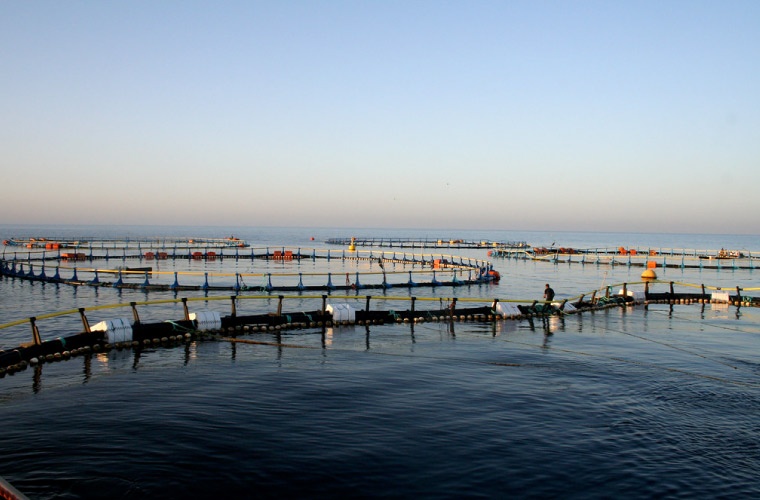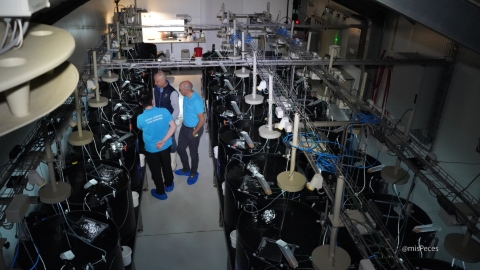
Nestled at the crossroads of Africa and the Mediterranean, Tunisia is quietly making waves in the world of aquaculture. Over the past three decades, the nation’s seafood farming sector has transformed from a fledgling industry into a burgeoning economic force, with production reaching 21,000 tonnes in 2022, contributing 13% of the nation's fisheries output and valued at $106 million USD annually.
European sea bass (Dicentrarchus labrax) and gilthead sea bream (Sparus aurata) dominate Tunisia's aquaculture, accounting for approximately 96% of total production. Other marine species include Atlantic bluefin tuna (Thunnus thynnus), cultivated for fattening purposes, and Mediterranean mussels (Mytilus galloprovincialis), primarily farmed in the Bizerte Lagoon, where production has been inconsistent, varying between 40 and 200 tonnes annually. Pacific white shrimp (Litopenaeus vannamei) is also cultivated but remains at the pilot stage, with a modest production capacity of 2 tonnes per year.
In freshwater aquaculture, notable species include common carp (Cyprinus carpio), grey mullet (Mugil cephalus), and pike-perch (Sander lucioperca), among others.
But this is more than just a story of growth—it’s a tale of innovation, resilience, and an unwavering commitment to sustainability.
The Tunisian aquaculture story begins modestly in the 1960s, with freshwater fish farms and experimental marine hatcheries serving as the industry’s first steps. By the mid-1980s, the country ventured into commercial aquaculture, introducing sea bass and sea bream farms. However, not all was smooth sailing—early projects were hampered by environmental challenges, such as eutrophication, which forced many farms to scale back operations.
It wasn’t until 2007 that Tunisia truly hit its stride. The introduction of offshore floating cages revolutionised production, enabling farms to cultivate fish in the open sea. Today, Tunisia boasts a diversified aquaculture portfolio, including European sea bass, gilthead sea bream, mussels, shrimp, and even seaweed.
Turning Challenges into Opportunities
While the growth has been impressive, it hasn’t been without its challenges. Tunisia remains heavily reliant on imports, with 50% of fish feed and 80 million fry sourced from abroad. Efforts are underway to bolster local production, including the establishment of fish feed factories and hatcheries, but progress is incremental.
There are also hurdles in maintaining competitive prices and tackling disease management, but industry leaders remain optimistic. Recently, a spokesperson from Tunisia's Ministry of Agriculture stated that they have a roadmap in place, and the "future looks promising."
In recent years, sustainability has taken centre stage. Tunisia has embraced Integrated Multi-Trophic Aquaculture (IMTA), a cutting-edge approach that mimics natural ecosystems by farming fish alongside seaweed and shellfish. This not only reduces environmental impact but also boosts resource efficiency—a critical step in the face of growing global demand for sustainable seafood.
Moreover, Tunisia has adopted international certification standards, such as the Aquaculture Stewardship Council (ASC) and Best Aquaculture Practices (BAP), to ensure its products meet the highest quality and sustainability benchmarks.
A Vision for 2030
Looking ahead, the Tunisian government is aiming high. By 2030, aquaculture is expected to account for 30% of national fish production, driven by strategic investments, innovative techniques, and the introduction of new species. The sector currently employs 3,000 workers, from scuba divers to engineers, and continues to attract private investment.
For a country often overshadowed by its neighbours in economic headlines, Tunisia’s aquaculture sector is quietly carving out its niche. It’s a story of transformation and tenacity—a reminder that even the smallest fish can make big waves.


